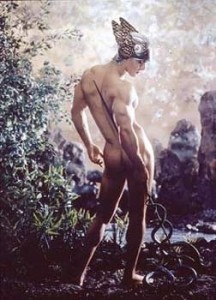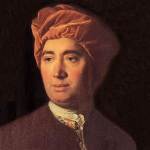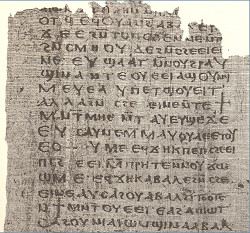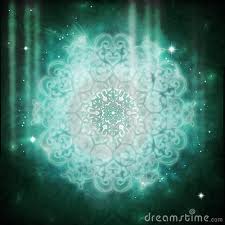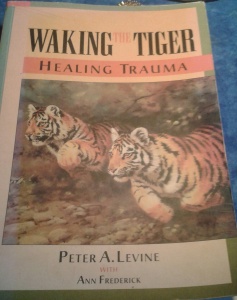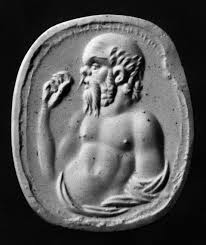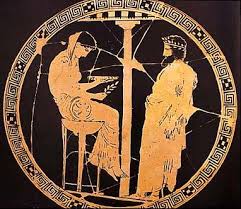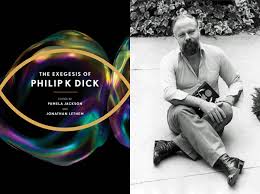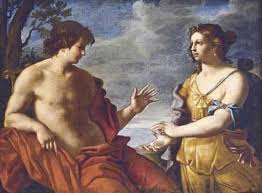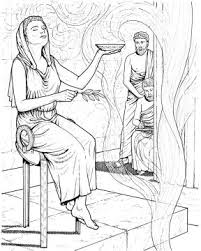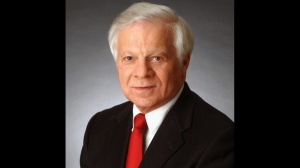 James Hollis was concerned with recovering a mature spiritual life in our very materialistic culture. In his book Finding Meaning in the Second Half of Life: How to Finally, Really Grow Up (2005) he said,
James Hollis was concerned with recovering a mature spiritual life in our very materialistic culture. In his book Finding Meaning in the Second Half of Life: How to Finally, Really Grow Up (2005) he said,
“In order to recover, or perhaps to reconstruct, a mature spirituality amid an age of shoddy spiritual goods, we need first to reflect not only on what spirituality means, but also on how it is formed, how it may serve, and what we need to learn from its past.
In the nineteenth century the French thinker August Comte noted how the complex mystery of our world was originally experienced through a psycho-religious perception called animism. Animism, from the Latin word anima, which means “soul,” derives from a naïve confusion of outer and inner, objective and subjective realities. Early cultures experienced the world as “en-souled,” that is, all things being the embodiment or the carriers of soul energy. The tree had soul (from which we still derive the expression to “knock on wood,” as a summoning of the anima within the tree to stand by us for good fortune). The earth had soul, whose goodwill and bounteous fruit people needed to arouse through acts of sympathetic magic such as sacrifice of animal or human, ritual intercourse in the fields and temples, and so on. Each person carried and embodied soul, and people often recognized it in each other, as in the Hindu greeting with palms together in acknowledgment of the soul in the other, or even projected it onto each other, as in the case of possession.
As we know, the course of human history since that distant era has been to develop a keener differentiation of objective and subjective, lest we be bewitched by projections, or even hallucinations. Yet, as a result, the presence of soul is experienced less and less in the world, and the world is more and more denuded of spiritual depth. Today we consider the animists naïve, though we might envy the omnipresent spiritual vitality of the daily world that they had in abundance, in both its terrifying and comforting expressions. We think ourselves superior to them although we all still employ superstitions, as we call them, rituals to ward off evil, and magical thinking in our private, unguarded moments that betray the resurgence of the old subjective-and-objective confusion after all. (Just watch how folks twist their bodies back and forth after having already released a bowling ball.)
With the increasing development of ego consciousness, Comte noted that the stage of animism was replaced by the theological stage, whether the gods of the antique world or the formal religious bodies that arose out of the Levant and the Far East. We see the transition from the animistic to the theological occurring when, for example, the immense power of the sea is embodied in a specific deity, Poseidon, whose name appropriately means “earth-shaker.” Before setting forth on the wine-dark sea, Homer’s mariners respectfully entreated the beneficence of this god, who could so easily annihilate them.
As the great religions become less and less a matter of personal experience and more and more a question of surrender of personal authority to corporate security, they take on a life of their own in institutional and cultural forms. While each person is profoundly affected by these cultural forms, internalized as complexes of affect, value, and response, most are led further and further from the validation of personal revelation into the affirmations of belief in the received forms rather than the immediacy of primal experience. By the mid-nineteenth century many noted thinkers, from Kierkegaard to Nietzche to Dostoevski, had concluded that “the gods had died.” They were making psychological statements even before psychology as we know it, not metaphysical statements. That is, they were witnessing the psychological reality that for most, the cultural forms of the gods, and their attendant value systems, no longer evoked the immediacy of personal experience. The loss of this connection to the soul was felt as alienation, a disorientation, and evoked a nostalgia on the one hand and the nervous rise of secular surrogates such as scientism and materialism on the other.
Comte greeted this change with enthusiasm because he thought it was “progress” toward the age of positivism. By positivism he meant that nothing could be considered authoritative if it was not objectively validated. The chief validation was that of the senses, to which the modern sciences lend themselves so readily. Clearly, the modern sciences have brought greater comfort and control to humanity through an increased manipulation of the material conditions of life. However, Comte’s nineteenth-century view, the one in which we all were raised, the idea of material and scientific progress as a form of spiritual evolution, has, in the face of recent history, also proved naïve and one-sided. Not only did that scientific skill enable the last century to be the bloodiest in the long, lamentable catalog of human butchery, but the failed gods of modernism left the modern adrift in our materialist sea, awash with corporate empires whose books are cooked, governments founded on mendacity, and intellectuals intent on constructing monuments to their neuroses.
We may condescend toward the old animist, but at least his world was spiritually charged in a way in which ours is not. He or she understood that survival, and meaning, depended on the capacity to read the signature of the invisible at work in the visible world. Not only did the animist need to read the signs of nature in order to survive physically, but he or she also had to align his or her choices with subservience to the perceived spirit powers. By limiting our contemporary sense of truth to what can be physically validated, we have limited our deeper access to the world and de-souled it in many ways.
One may especially see this tendency in the limitation of most modern psychotherapy to behavioral modification, cognitive reprogramming, and pharmacology—all useful approaches, but by themselves superficial and unintentionally devaluing of our deepest being. One may see in popular theologies the same heresy as in psychology, namely the confusion of the image with the energy that animates it. Thus people worship forms of belief without struggling with the issues the forms tentatively embody, or emulate behaviors without questioning whether they really serve fuller life. Accordingly, either the image of divinity is to be defended for its presumed historic claim, or it is to be summarily rejected as unworthy of a modern sensibility. In either case the world is de-souled, when what it needs in reanimation; either way, the individual is prey to belief systems that narrow into rigid positions rather than expand to opening dialogue; the mystery is banished and therefore rendered irrelevant to all. Similarly, one may attend a college in order to avoid the radical opening to real education, go to church to avoid religious experience, and even undertake therapy to avoid the reality of the psyche. All of these practices are in fact common, albeit mostly unconscious, and result only in deeper and deeper alienation from the mystery. And all reduce the measure of life through the disregard of personal experience and deflection of personal authority.
This is the sad state of modernism, no matter where one stands on the religious spectrum. Polls indicate that Americans profess a higher percentage of belief in a deity, attend religious services more, and all the while have a greater reliance upon material comforts than the citizens of any advanced nation. Their religiosity may not be so religious when it is in service to complexes, group-think, an persistent avoidance of personal spiritual maturation and humbling service to the mystery.
Truly, one should be wary of religious experience, for it may ask something of us that we would prefer to avoid. Most people intuit this threat, this likely summons to largeness, and for this reason, many cultural manifestations of religiosity are surreptitious efforts to avoid actual religious experience. No wonder, then, we seem so disaffected, so adrift, so easily suckered by pop ideologies and fleeting fashions of attire, behavior, and thought. No wonder, then that a culture that has lost its soul drifts into unconscious pacts with whoever offers to lead it, whoever proclaims clarity of values, or, more often, whoever promises to distract the citizenry. Daily obeisance to the television set threatens to become the chief soporific of our time, supplanting religious inquiry, intellectual growth, discernment, discrimination of values, as well as enabling avoidance of whatever personal demons we may have.
All of this distracted flight may fairly be called a Seelekrankheit, a sickness of the soul. Still, others have sought to live stoically and with integrity in the presence of absence. As poet Stephen Dunn recounts:
Tell them that in the end I had no need
For God, who’d become just a story
I once loved, one of many
With concealments and late night rescues,
High sentence and pomp. The truth is
I’d learned to live without hope
As well as I could, almost happily,
In a despoiled and radiant now.
The despoiled now may not be as richly endowed as the spirit-appareled world of our animistic ancestors, but it remains radiant.
Such radiance in the present moment still moves all humanity, and from that experience metaphoric images rise to bridge them to the mystery. After these spontaneously appearing images lose their luster, we seek to re-create the experience through the cultural forms of dogma, ritual, and cultlike practices. Dogma serves as a reassuring program of answers to questions that arise: to explain, to communicate, and in time to defend the past for the person who did not experience it directly. The dogma itself does not carry the mystery, though it may sincerely seek to sustain its impact. Rituals have the intent to re-create the encounter with the mystery, to summon up the spirits, and hopefully reanimate the original encounter. Through reiteration, however, rituals tend to lose their connection to the primal energy and increasingly become hollow forms. In time, they tend to become rigid, inflexible entrapments of soul rather than summoners to largeness. Similarly, the cultural forms of dress, behavior, ethics that distinguish one group from another can grow arbitrary, disconnected, and cultlike and become the source of alienation from other groups with other forms of the same experience.
Lastly, institutions grow up around these cultural forms, at first in homage to the primal events, and then as guardians of their history, and ultimately as encapsulated entities that are most invested in preserving themselves, long after the spark of primal experience has left them. The chief project of modernism, that movement of literature, art, music, psychology, philosophy, and troubled sensibility over the last two hundred years, was to witness the eroded authority of such institutions and to dismantle their claims to govern the modern soul. Fundamentalism spends its anxious time trying to defend the secondary minutiae of historic claims, seeking arks on Mt. Sinai or defending parthenogenesis as a biological event rather than a spiritual metaphor, all the while employing bad science and bad theology in futile arguments. Institutions that claim power over our nature will have to pay nature’s denied due, and will end by abusing their flock. Some people leave all cultural religious forms in disgust, despair, or desolation, and walk into the sterile kingdoms of atheism and materialism, in which no transcendent expression will be found.
The question remains, then, how we are to reconstruct a viable spirituality in the time of sterile materialism, failed institutions, and hawkers of shoddy spiritual merchandise in New Age bookstores. Any project to revivify by going back is doomed to failure. New wine does not come from old wine bottles. Nonetheless, there are some paths through the past that are well worth our exploration. Each of us is the inheritor of a profoundly rich symbolic tapestry. In each of our traditions there are images that can still speak to us if we can differentiate from the perspective of another time and place the universal issue that each of them embodies.
It is useful to consider the following four questions when we examine any mythic image or cultural form that solicits our attention. They are:
1. What is the universal, timeless question that this form, image, narrative seeks to address?
2. What is the response this person, or this tradition, offers to that question?
3. How does my contemporary culture address that same issue?
4. How much of that is confirmed by my own experience?
Beneath the unfamiliar cultural form of each image resonates timeless issues: “How are we to understand death?” “By what values, or discernment processes, do we make difficult choices?” “How does one sort one’s way through the contemporary brambles to find one’s path?” And so on. Our culture has very inadequate answers to these kinds of questions, if any at all. Since these questions never go away, they go underground, into the unconscious. Or they are projected into cultural masques through our movies and songs. Or denied altogether, they leave us very much alone in the universe, where rather than suffer those questions honestly and openly, we are left prey to triviality and banality.
So as we sort through the rubble of historically charged images, by what standard do we gather them to our heart? It cannot be their institutional authority alone. It cannot be because our family or ethnic tradition embraced them. It can only be if they move us, that is set off a resonance within us. If such resonance occurs, the activation of like to like in some hidden harmony, then we know that that image has some meaning for us. We feel it. No amount of willpower or faith can, as such, arouse such resonance for us. When the spirit has departed, we cannot will it back. Though we may not understand why, when the spirit is present, we will be moved.
Upon reflection, three essential points became clear. First, that the eternal questions will arise in quite different guises in all times, and persist in determining the value of our lives whether we are conscious of them or not. Second, that those who went before us experienced profundities in forms that may, or may not, still stir us as well. We owe it to them, and to ourselves, to inquire seriously. And third, that our culture is failing miserably to bring us to these questions, which deepen our humanity and bring worth a weight to our journeys. This last fact constitutes a betrayal of the largeness of the soul, and therefore a deception of the individual person by the collective.
This test of resonance is critical to our capacity to gather a spirituality that brings deepened connection and meaning into our lives. (Hollis, pp. 192-200)”
 the discovery of White Eagle as a channeled entity, or of the caboclos of Brazil. Baixinha and the Umbanda, Padrinho Sebastiao and the Mesa Branca didn’t have to come up, even though that is part of the story. Or the Peyote Ceremony when I discovered my nephew’s Santo Daime guide was aguila branca. He was about as astounded as I was.
the discovery of White Eagle as a channeled entity, or of the caboclos of Brazil. Baixinha and the Umbanda, Padrinho Sebastiao and the Mesa Branca didn’t have to come up, even though that is part of the story. Or the Peyote Ceremony when I discovered my nephew’s Santo Daime guide was aguila branca. He was about as astounded as I was. said, referring to my friend’s medical condition, “There is encouraging research evidence that even minimal psychological intervention can be of benefit. (When the Body Says NO: The Cost of Hidden Stress (p. 155)” I asked him if he had, after suffering for 12 years in the care of his doctors, ever tried seeing a counselor. He answered in his characteristic truthfully humorous way with
said, referring to my friend’s medical condition, “There is encouraging research evidence that even minimal psychological intervention can be of benefit. (When the Body Says NO: The Cost of Hidden Stress (p. 155)” I asked him if he had, after suffering for 12 years in the care of his doctors, ever tried seeing a counselor. He answered in his characteristic truthfully humorous way with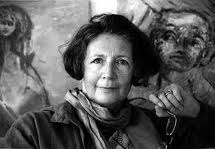 and that we had a very similar cultural clientele. Like most of the intellectual philosophers whom Storr describes in his book, I was slow to pick up my colleague’s work. I had just finished Solitude when Scattered arrived in my mail box. Reading Mate’s book on the hidden effects of stress reminded me of The General Theory of Love and how my warts suddenly disappeared when I was surrounded with my loving spirit family. We were discussing the last remaining wart at the dinner table when my friend wanted to know, “who are you, really?”
and that we had a very similar cultural clientele. Like most of the intellectual philosophers whom Storr describes in his book, I was slow to pick up my colleague’s work. I had just finished Solitude when Scattered arrived in my mail box. Reading Mate’s book on the hidden effects of stress reminded me of The General Theory of Love and how my warts suddenly disappeared when I was surrounded with my loving spirit family. We were discussing the last remaining wart at the dinner table when my friend wanted to know, “who are you, really?”
 Male potency, an erect phallos upon demand, is the effect Viagra is intended to produce. Although I have never tried that product, I hear that it works and that, under certain conditions, it could kill you. A similar problem was discussed in ancient Roman literature. The Satyricon, written by Petronius, centers around a well endowed and handsome young Roman called Encolpius. He is an ancient version of the modern Don Juan, who courts, seduces, and abandons tender sweet young things. Encolpius, whose name means “the crotch”, does not restrict his lovers to young women like Don Juan. Encolpius was attracted to his slave boy Giton as well as the young ladies. What his lovers share in common is important. They are young (16 or 17 years old), attractive, and effeminate. They represent his youth, which psychologically he is trying to penetrate, to recapture, restore.
Male potency, an erect phallos upon demand, is the effect Viagra is intended to produce. Although I have never tried that product, I hear that it works and that, under certain conditions, it could kill you. A similar problem was discussed in ancient Roman literature. The Satyricon, written by Petronius, centers around a well endowed and handsome young Roman called Encolpius. He is an ancient version of the modern Don Juan, who courts, seduces, and abandons tender sweet young things. Encolpius, whose name means “the crotch”, does not restrict his lovers to young women like Don Juan. Encolpius was attracted to his slave boy Giton as well as the young ladies. What his lovers share in common is important. They are young (16 or 17 years old), attractive, and effeminate. They represent his youth, which psychologically he is trying to penetrate, to recapture, restore. 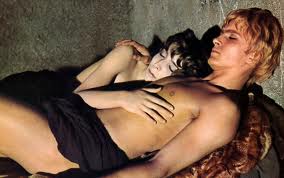
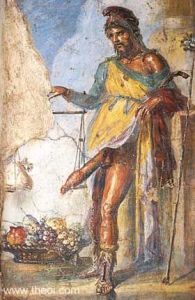 In the end his search takes a curious turn, which is very instructive. Hermes takes pity on Encolpius and restores his sexual prowess. If we look at the god Hermes we can see the possible route for modern men in curing their sense of impotence.
In the end his search takes a curious turn, which is very instructive. Hermes takes pity on Encolpius and restores his sexual prowess. If we look at the god Hermes we can see the possible route for modern men in curing their sense of impotence.
